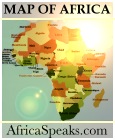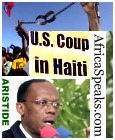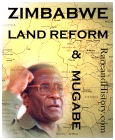Bolivia in Historical and Regional Context
Posted: Thursday, October 30, 2003By Forrest Hylton, www.counterpunch.org
Slave driver
the table has turned
Catch a fire
you're gonna get burned.
--Bob Marley, Slave Driver
On October 17, the Day of National Dignity-which commemorates the greatest achievement of socialist martyr Marcelo Quiroga Santa Cruz: the nationalization of Gulf Oil in 1969-former Bolivian President Gonzalo Sánchez de Lozada, his family and inner circle (Minister of Defense Carlos Sánchez Berzaín, Minister of Government Yerko Kukoc, and Minister of the Interior Jose Luis Harb) fled to Miami, though not before looting $85 million from the Bolivian Central Bank of course. The party that had designed and implemented neoliberalism in Bolivia, the National Revolutionary Movement (MNR), had finally been broken by overwhelming, non-violent popular opposition, though at great human cost. In less than a month, troops under the command of the MNR killed more than 84 civilians and 15 conscripts who refused to fire on unarmed protestors. The MNR disappeared some 40 people, injured more than 500 and detained an untold number in a desperate effort to maintain power and preserve the neoliberal status quo. The "gringo," as Sánchez de Lozada was called, had gone home. What had, until recently, been a clever piece of graffiti became a reality, and the Bolivian majority-not multinationals and their tiny minority of compradors-had decided to determine the fate of the second-largest gas reserves in Latin America. Since the Spanish "discovery" of Cerro Rico in Potosí in 1545, laboring Bolivians have suffered from the looting and export of their natural resources for the benefit of others. Their memory is long, their patience has run out, and their resilience is unspeakable.
As darkness descended on the Plaza San Francisco, the symbolic heart of the nation's capital, truckloads of miners and Quechua-Aymara peasants from Oruro and Potosí arrived to march and celebrate their triumph. They chanted, "Yes we could!"-a parody of "Sí se puede!", Sánchez de Lozada's campaign slogan-and, "Goni! You bastard! The people have defeated you!" Earlier in the afternoon, in the Plaza San Francisco Alteños (people from the Aymara city of El Alto, located on the upper rim of La Paz); neighborhood groups from the steep hillsides of La Paz; along with miners, teachers, students, market women, butchers and bakers, truckers and taxi drivers; staged the largest rally in Bolivian history. Estimates run as high as 500,000. The Wiphala-considered the flag of the oppressed, indigenous Bolivian nations-flew side by side with the Bolivian flag, as insurgents re-appropriated national symbols from the dominant race/class, effectively laying claim to the nation that has never been willing to make a place for them as political equals and stewards of an economy based on collective labor, land use, and rational use of natural resources.
On October 18, when truckloads of miners and Aymara-Quechua community peasants ascended from La Paz and passed El Alto on their way home, thousands of Alteños lined the streets to cheer them on, provide them with food and water for punishing trip, and express gratitude for the solidarity they had received. Architects of the eleven-day general strike that brought the capital to a standstill-especially after a general strike was called in solidarity with the twenty-six Alteños massacred on October 12, the 511th anniversary of the genocide initiated by Columbus-Alteños knew that they, the proletarianized peasantry, along with brother and sister Aymara community peasants in the Lake Titicaca region, could not have overthrown the government without practical support from rest of the country's social movements. These are listed in descending order of impact: 1) coca growers from the eastern Chapare lowlands, 2) Quechua-Aymara community peasants from the southern highlands and valleys of Potosí and Sucre, 3) the miners from Huanuni, Oruro, 4) the multi-ethnic, cross-class civic movements that shut down Cochabamba, Sucre, Potosí and Oruro on the 14th and 15th 5) prominent middle-class intellectuals, human rights activists, professionals, students and citizens who launched a hunger strike on the afternoon of October 15.
Many analysts see recent events as part of a clear pattern established in Ecuador in 1999 and repeated in Argentina and Peru in the new millennium, whereby loose coalitions of popular movements, mobilized against the neoliberal model and the political parties and/or politicians associated with it, overthrow governments without being able to impose an alternative economic model and a new set of political arrangements. While superficially plausible, such comparisons overlook the depth and sources of the insurrectionary tradition in Bolivia, elide the question of the distinctive characteristics of the armed forces in each country, and miss the potential significance of the "October Days" for the Bolivia's future. A tradition of Aymara-Quechua community peasant insurgency stretches back to the late eighteenth century and was transformed through successive struggles over collective land rights and self-government in the nineteenth and early twentieth centuries; as historian Adolfo Gilly has pointed out recently in La Jornada, it forms the bedrock of a tradition of popular insurrection without parallel in the hemisphere.
Bolivians are now living through the most radical moment of republican history since the National Revolution of 1952, in which Trotskyist-led tin miners militias triggered and urban insurrection that defeated the Bolivian army-which decomposed rapidly-as peasant militias in the western highlands and especially in the valleys of Cochabamba staged land takeovers and smashed landlord rule in the countryside, handing power to the MNR. President Victor Paz Estenssoro-like many MNR leaders, a middle-class intellectual from Cochabamba-ratified the land takeovers, which would provide the MNR with deep reservoirs of support in the countryside for decades, and nationalized the country's major tin mines, like Siglo XX and Cataviri. Opposed to imperialism and the oligarchy composed of merchant-miner-landlords, the MNR seized control of the insurrectionary movement for its own benefit, but also imposed significant structural reforms. They aimed to modernize the economy, create an internal market and "civilize" the Aymara-Quechua peasant communities through compulsory schooling and military service. They helped bury the memory of the traditions upon which the revolution was ultimately built.
Trapped between mounting US imperial pressure and a tin miners' trade union movement led by Trotskyist and Stalinist parties-which formed the center of gravity of the Bolivian Workers' Central (COB) that aglutinated of civil society-splintered into warring factions above and, through clientelist control of peasant trade unions, below. The MNR grew progressively weaker vis-à-vis both the US government and the COB, and with the backing of the US government, René Barrientos became the first military leader to highjack the revolution. Since he spoke fluent Quechua and employed classic forms of populist demagoguery to great effect, he solidified a clientelist following in the countryside loyal only to him, mobilizing peasant militias to crush miners' strikes in what was known as the "military-peasant" pact. Though under Juan Jose Torres and the Popular Assembly (1969-71), proletarian-led radicalism enjoyed a brief upsurge, the military-peasant pact lasted through the neo-fascist dictatorship of Hugo Banzer Suárez (1971-78), and the question of self-determination for Aymara and Quechua peasant communities had just begun to be raised.
The emergence of a radical Aymara peasant trade union federation (CSUTCB) out of clandestinity in 1979 rejuvenated the COB, which, together with Left political parties, overthrew two violent-albeit short-lived-dictatorships, electing a center-left coalition (the UDP) in 1982 that was to go beyond "the incomplete revolution" toward some version of state-led welfare capitalism (known in those days as "socialismo"), but with a new demand: self-determination for Aymara-Quechua peasant communities.
Instead, with the MNR and the MIR (Revolutionary Leftist Movement) engaging in Parliamentary warfare against Left opposition parties, and the miners' movement increasing in militancy and radicalism, the UDP proved unable to govern, and popular hopes of national sovereignty-rekindled throughout the 1970s by Marcelo Quiroga Santa Cruz among others-were buried. With inflation running at 24,000% annually, in 1985, Victor Paz Estenssoro took his last turn in office and dismantled dependent state capitalism, calling on a young, American-educated technocrat-Gonzalo Sánchez de Lozada-to redesign the relationship between the State, society and the economy, which resulted in a neoliberal blueprint: DS 21060. The tin mines were privatized in one swift motion, the miners' movement crushed with state terror, and 20,000 miners were "relocalized" (a euphemism for firing and displacement). Lacking strong allies in the proletarian movement, and rent by internal divisions and sectarianism, the CSUTCB fell into decline. Meanwhile, the coca growers' movement of peasant colonizers in the eastern lowlands of the Chapare-led chiefly by ex-miners-turned into the most militant and confrontational of Bolivia's social movements just as George H.W. Bush had begun to ratchet up the intensity of the "drug war" in the Andes. Current US Ambassador David Greenlee, then a CIA agent working as an attaché, designed the counterinsurgent strategy of forced coca eradication.
Because of the thoroughness of his privatization programs, during Sánchez de Lozada's first term as president (1993-97), the IMF and the World Bank held Bolivia up as a model for "LDCs" around the world, and until 2000, the neoliberal political parties-MNR, MIR, CONDEPA, UCS, NFR-enjoyed a monopoly of legitimate political representation. However, with the fight against privatization in the Cochabamba "water wars," the popular movements scored their first victory in almost two decades. This was reinforced by an Aymara resurgence in the highlands under the direction of Felipe Quispe and more combative CSUTCB. As the neoliberal façade began to crack under President Hugo Banzer Suarez, the former dictator, state terror increased and the political parties began to watch their legitimacy erode. This is the context in which the coca growers, Aymara highland peasants, proletarianized peasants from El Alto and La Paz, along with disaffected middle class professionals and intellectuals, voted for two new opposition parties, Movement Toward Socialism (MAS) and the Indian Revolutionary Movement (MIP), which between them picked up forty-two seats in Parliament-a historic first. Evo Morales, leader of the coca growers' trade union federations and their political vehicle, MAS, lost the presidential elections by less than 1.5%.
In October, led by the proletarianized Aymara peasantry of El Alto, Aymara peasant communities of the western highlands; and reinforced by the Quechua-Aymara peasant communities of the southern highlands and valleys, as well as the Quechua-speaking mestizo coca growers' and colonizers of the eastern lowlands; plus the urban middle classes of La Paz, Cochabamba, Santa Cruz, Tarija and Oruro who took to the streets and the airwaves, long and distinguished traditions of insurrection have enjoyed a renaissance, and there can be no doubt which sector was the driving force.
What began as the most important highland Aymara uprising in Bolivia since the Federal War of 1899 became, in a matter of days, become a nationwide, non-violent insurrection-a national revolution in march. Unlike the national revolution of 1952, which brought Sánchez de Lozada's MNR to power on the back of insurgent miners' and peasants' militias, were it to materialize, the new revolution would hold out the possibility that the colonial contradiction that has structured the Bolivian republic since its inception-the economic exploitation, political domination and racist oppression of the Indian peasant and proletarianized majority-will finally be resolved. It is important to emphasize that the new nationalism in anything but an atavistic, separatist and racially exclusive backlash against neoliberal imperialism. If, at the macro-level of the state and public policy, the new revolution recognizes the demands for popular sovereignty and self-government, and the forms of trade union and Indian community organization from which those demands arise, it will be a world-historical first that with repercussions throughout Latin America, Africa, India and Southeast Asia. In spite of the colonialist terror that has descended on the new millennium in the Middle East and Central Asia, the poorest, most indigenous and most geographically isolated country of the South American continent may well provide a beacon of light to the rest of the world.
The new revolutionary process, whose outcome is of course uncertain rather than guaranteed, demands an end to multinational and US imperial domination, rejects the FTAA, insists on the right to grow and commercialize the coca leaf as well as control and regulate the use of natural resources for the benefit of the majorities that produce Bolivia's wealth. It also includes the demand for political autonomy, representation and self-government for highland and lowland native groups whose forms of social reproduction and political struggle are non-liberal and even non-capitalist.
One thing is certain: the era of the MNR-led coalitions is over, and with it, the neoliberal political-economic system implemented in 1985-86. The relation of the State to the economy and society will change, but it is much too early to say how or when. Though neither Evo Morales nor Felipe Quispe led the struggles of the "October Days," the rank-and-file, especially in El Alto, have shown what they can accomplish on their own initiative. This means that there will be two Constituent Assemblies and a form of dual power: one will take place in Parliament among delegated political representatives, and another in the streets, neighborhoods, trade unions, Indian peasant communities; among miners, coca growers, students and, perhaps, even middle-class intellectuals and personalities. There is a country, if not yet a world, to win.
Forrest Hylton is conducting doctoral research in history in Bolivia. This article originally appeared in the South African paper This Day. He can be reached at forresthylton@hotmail.com.Printer friendly version
Send page by E-Mail

Previous Page | Zimbabwe Watch | Historical Views | Home
NOTICE: All articles are the copyright property of the writers. In accordance with Title 17 U.S.C., section 107, some material on this site is provided without permission from the copyright owner, only for purposes of criticism, comment, scholarship and research under the "fair use" provisions of federal copyright laws. Visit: http://www.law.cornell.edu/uscode/17/107.shtml for more details. If you wish to use copyrighted material from this site for purposes of your own that go beyond 'fair use', you must obtain permission from the copyright owner.










